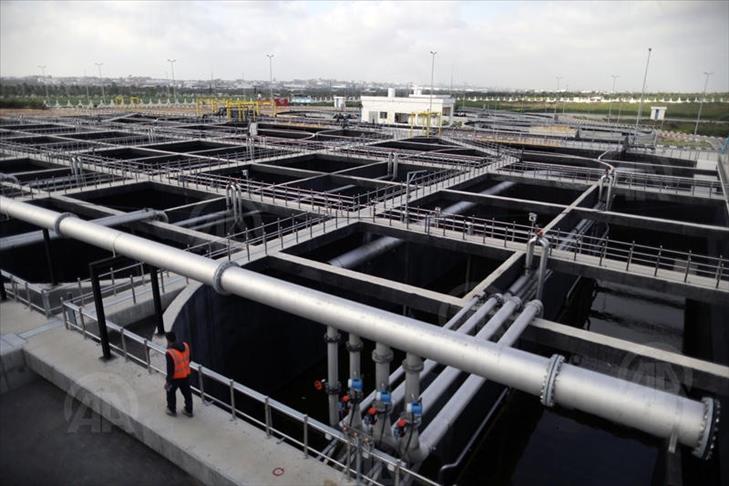
By Ovunc Kutlu
ANKARA
From the beginning of the 20th century to the 1990s, oil prices were affected primarily by wars. In the last three decades, though, the major factor has been increasing economic integration around the world.
In both cases, countries that control the supply can use oil prices to put pressure on consuming countries and other oil producers.
The American benchmark, West Texas Intermediate, was widely used until the 1980s as a global pricing index. It was criticized in the mid-2000s as not reflecting world oil prices accurately. While West Texas Intermediate is still valid for North America, the Brent crude oil benchmark is now used by two-thirds of the oil trade in the world.
- World Wars, Great Depression, Suez crisis
World War I affected oil prices dramatically. The price more than doubled between 1914 and 1918, to reach $1.98 per barrel of West Texas Intermediate, due to cuts in supply and high oil demands for the war effort.
In 1935, during the Great Depression, prices fell as low as $0.97. But in 1944, during World War II, prices rose to $1.21. And in 1948, they rose to $1.99 per barrel due to post-war construction and the industrial boom.
When Britain, France and Israel invaded Egypt in late 1956, in response to Egypt’s nationalization of the Suez Canal, through which two-thirds of Europe's oil passed, prices rose to $3.07 per barrel in 1957.
- The founding of OPEC and the Arab oil embargo
OPEC was founded in 1960 to counter the 1959 oil import quota imposed by U.S. President Dwight Eisenhower and the seven international oil companies that dominated the global oil industry. OPEC's founding members -- Saudi Arabia, Kuwait, Iraq, Iran and Venezuela -- were later joined by Qatar, Libya, United Arab Emirates, Algeria and Nigeria.
The 1967 oil embargo by Arab countries against the U.S. and the U.K. due to the Six-Day War against Israel held the prices at $3 per barrel mark.
The real spike came with the Yom Kippur War.
In 1973, OPEC imposed an oil embargo on the U.S. and Western Europe for their support of Israel in the war, resulting in a massive jump in oil prices -- from $3 to $12 between October 1973 and March 1974. The embargo led to a global recession and a self-imposed ban by the U.S. on exporting any of its crude oil, a ban that remains in effect to this day. OPEC members came to realize that their oil resources could be used both as an economic and a political tool to put pressure on other countries.
- Iranian Revolution, Iran-Iraq War, Gulf War
The 1979 Iranian Revolution led to another crisis when Iran cut production and exports and canceled its contracts with U.S. companies. Oil prices nearly tripled, reaching $39.5 per barrel in April 1980. Iran’s production cuts greatly benefitted other OPEC members which recorded massive profits.
With the beginning of the Iran-Iraq War in 1980, Iraq's oil output declined significantly too, and prices remained between $36 - $39 per barrel until the mid-1980s. The absence of the two nations made room for oil exports from other regions, such as Venezuela, Nigeria, Mexico, the North Sea and the Soviet Union which became the biggest producer in the world.
Overproduction created a glut of oil supply in the world's markets, as prices fell to $12 per barrel in March 1986 when Saudi Arabia increased its oil production to gain market share - a move that would be seen again in 2014.
When Iraq invaded Kuwait in Aug. 1990, to revive its war-torn economy and to increase its influence in the Middle East, oil prices spiked to $36 per barrel. With the end of war, oil prices fluctuated between $15 - $25 per barrel for the next six years.
- Asian financial crisis
In 1997, the Asian financial crisis caused global demand for oil to fall, and the price fell to $11 per barrel between 1997 and 1999. Big oil companies, including Exxon, Chevron, BP, Total and Royal Dutch Shell absorbed weaker ones through mergers and acquisitions. Russia, dependent on revenues from oil exports, was hit by a financial crisis in 1998, which later affected Brazil and Argentina.
As Asian and world economies recovered between 1999 and 2001, global oil demand rose and prices increased to as high as $34 per barrel. With the events of 9/11 and the U.S.' invasion of Iraq, concerns were raised about the stability of the Middle East, and the secure flow of oil into the world's markets, bringing oil prices gradually to record-high levels in 2008.
- Economic boom and 2008 global crisis
Between 2001-2008, booming Asian economies and global economic growth led to high demand and low supply as crude oil prices, now indexed as Brent crude, increased to their highest point in history, reaching $147 per barrel in June 2008.
The global financial crisis in 2008 witnessed financial institutions collapsing, and the resulted losses went into trillions of U.S. dollars. Oil prices plummeted due to low demand to reach $36 per barrel in December 2008 -- falling almost 80 percent and recording the fastest slump in history.
It took world economies four years to climb back from the global recession, as Brent price rose gradually to reach as high as $128 per barrel in 2012.
- War of market share
OPEC members were not the only major oil producing and exporting countries. Non-OPEC producers like the U.S. Russia, Canada and Brazil increased their oil production.
The world markets were slowly being flooded with excess oil. By 2013, OPEC was producing 36 million barrels of oil per day, while the rest of the world's output was 50 million barrels per day.
At the same time, the global demand for oil was decreasing due to the slow growth of Asian and European economies. In 2014, the value of the U.S. dollar, to which the oil prices are indexed, began to increase, hampering the purchasing power of countries that are dependent on oil imports -- worsening low global oil demand.
The Brent oil price fell sharply, from $115 to $75 per barrel, between June and November. That was when OPEC held its annual meeting and decided not to cut production, letting prices fall below $50 this month.
While Russia has suffered the most from low prices, the oil sector of other countries -- Venezuela, Canada, Brazil, Norway and the U.S. are expected to face most of the negative impact in the near future.
Saudi Arabia, Kuwait and the United Arab Emirates have repeatedly said they will not cut production; they blame non-OPEC producers for the glut and the falling prices.
Saudi Arabia and most Gulf countries produce oil at lower prices than other nations, which gives them the upper hand against the price slump and an opportunity to regain their market shares.
Anadolu Agency website contains only a portion of the news stories offered to subscribers in the AA News Broadcasting System (HAS), and in summarized form. Please contact us for subscription options.

